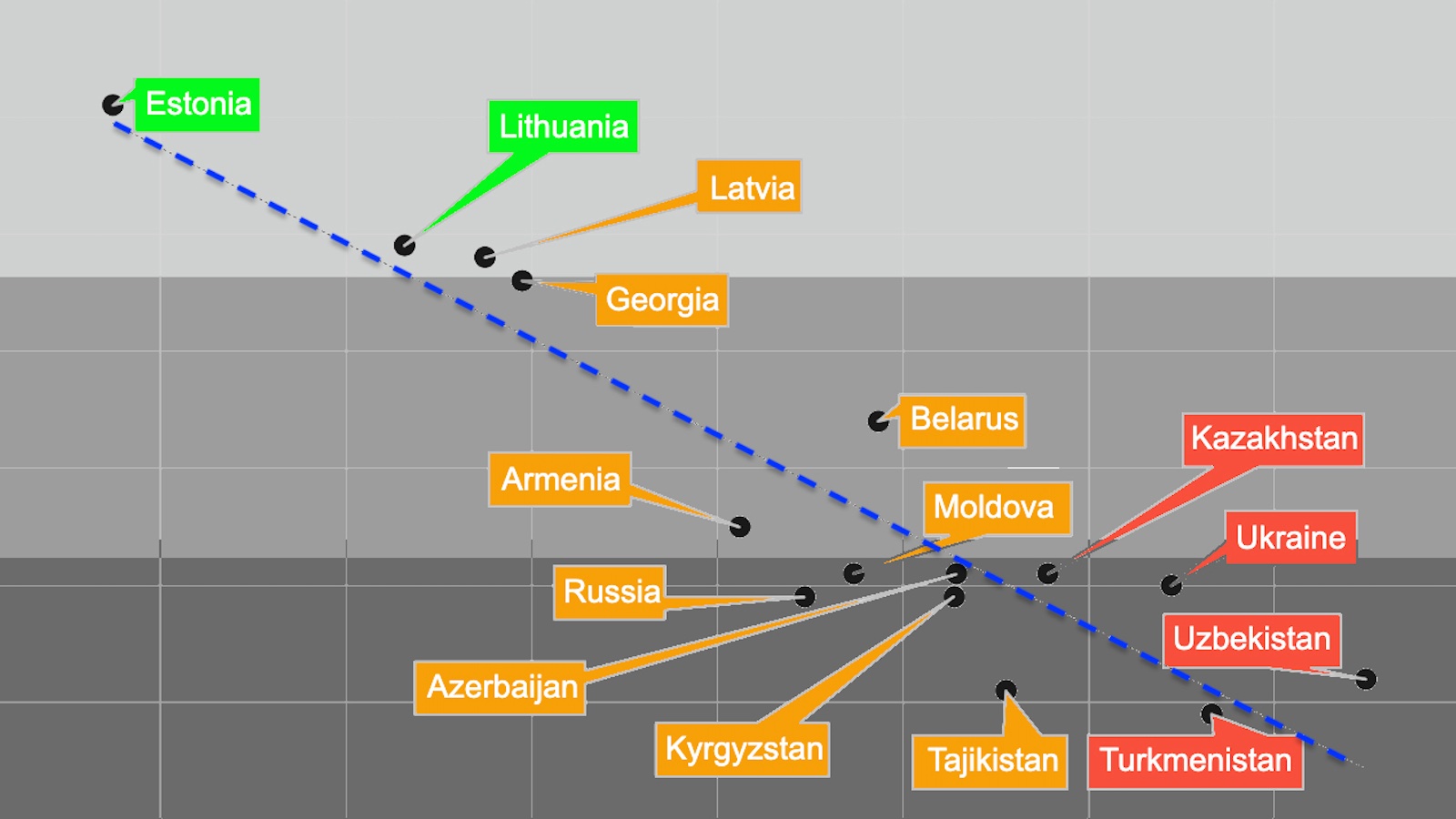The mortgage market indicated that what the banks faced was a solvency problem, not just a liquidity problem, says Nobel Laureate Vernon Smith.
Question: What implication does ignorance or blindness have for policymakers responding to this crisis?
Vernon Smith: The main point is that policymakers have to deal with a lot of uncertainty and a great deal of developments and events that are basically not predictable. The point about Bernanke is that it’s hard to think of a central banker who was better informed and more knowledgeable of the problems of the Great Depression. He has written extensively and had good understanding of what was considered to be the failures of the central banks particularly in the 1930s after the Depression got underway, but in spite of that knowledge it’s very clear that the Federal Open Market Committee under Bernanke did not see the mortgage crisis coming. They did not see the housing crisis. They were aware that the housing industry was going through an adjustment and this was repeated in the press releases by the Federal Open Market Committee all through 2007. If you go through the press releases clear up through August 7, 2007, Bernanke and the committee is still has some concern about inflation. They’re holding the federal funds rate at a relatively high level at that time and they did not anticipate the almost complete collapse of the mortgage market in early August 2007. Well the evidence that the Federal Reserve System, the Federal Open Market Committee and Bernanke did not anticipate the kind of trouble we were in is indicated by looking at the difference between the press release they put out in August 7, 2007 and the one three days later on August 10th. On August 7th they were reiterating that they would hold the federal funds rates steady and I think at that time it was five and a quarter percent and that they still anticipated the possibility of inflation and then three days later the press release points out that a number of financial markets are likely to experience considerable stress. And well, tell me about it. The mortgage market had completely collapsed and it was the derivatives market that was the tipoff. And its collapse was the first indication that the whole mortgage market was in serious trouble and no one has I think better expert econometric and economic analysis than the Federal Reserve, but it doesn’t mean that they can predict was is not predictable and so it’s clear that the experts were surprised and blindsided by that development, but I think it’s to Bernanke’s credit that he moved in what seemed to be a pretty decisive way at that time to dramatically enhance the liquidity of the banking system.
The problem is that what was happening I think in the mortgage market indicated that what the banks faced was a solvency problem, not just a liquidity problem. Now sometimes of course it’s hard to tell the difference. You have a solvency problem you see if the fundamental value of your assets are less than the value of your obligations that’s different from a liquidity problem in the sense that you just have a short term need for funds and of course you can have if you have a short term need for funds and a lack of liquidity that can cause distress sales and create a solvency problem, but and I think that’s the way that Bernanke saw the situation he was in, in August 2007 and it’s also I think pretty much how he saw the developments in the early thirties, in the early part of the Great Depression that the Federal Reserve System had simply not supplied sufficient liquidity to keep the system from creating an insolvency problem. I don’t really agree with this. I think in both cases that both in 1930 there is evidence that the banks had a solvency problem because of the loans that had been extended on residential and also commercial properties and those prices had started to, had come down and in fact that had been developing for already for three or four years in the late 1920s just as it had been developing, the defaults were starting to move up in our economy already by 2005, 6 and 7. It started to become then critical in 2007. But I think the point about personal knowledge. Polanyi and also Hayek emphasize this, that there is a difference between knowing that knowing how.
Academic knowledge tends to be based very much upon knowing about things, being able to analyze conditions after the fact, but that doesn’t necessarily give you good capacity to predict in advance and in particular it’s just like those of us that do experimental economics. We realize that, and this is true generally in all of experimental sciences and you find this in Polanyi when he talks about personal knowledge, that there is a lot of human capital involved in the experimental sciences and this is kind of an operating knowledge. It’s a form of can do knowledge that you learn by being involved and doing lots of experiments. You don’t learn about it by reading about it. It’s like learning to play the piano. You don’t learn to play the piano by reading about it. You learn by practicing and the same thing is true through much of the economy. A lot of the knowledge in the economy is this kind of can do practical knowledge learned by practice and the same thing is true at the level of experts and formulating central bank policy. It’s a matter of practice and you can have a good understanding of say the 1930s about what happened then, but it doesn’t mean that when you’re in the middle of a storm you will recognize that it’s happening around you because it’s just a different kind of understanding based upon practice and not necessarily the kind of academic analysis and knowledge that we get through econometric analysis and studies. And I think that’s basically a problem, and it means that you shouldn’t have too high expectations as to what the ability of our experts to deliver is. They’re going to be fallible and what we’ve seen I think and throughout this crisis is both in the Federal Reserve and also in the U.S. Treasury and other agencies of government you’ve had people learning as they go and a lot of the policies are being made up as they go. And that’s I think and inevitable consequence of the imperfection of our knowledge and the limits of our ability to practically manage complex systems like the U.S. economy.
And so what is important is really to avoid these kind of crisis situations in the first place and because they’re so difficult to deal with once we get into them because if nothing else the politics of these situations will drive policy and the politics is not necessarily good long term economic policy and of course the way to have avoided this kind of a problem in the first place was to have better collateralization of the kinds of loans that we’re being made in the housing market and generally in consumer credit markets. It’s not only the housing market, but it’s also credit card debt, student loan debt, automobile loans, all of those credit markets, which ended up being the kinds of private credit instruments that the Federal Reserve found itself necessary to make loans on in 2008. It ended up that the liquidity enhancement moves that the Federal Reserve made in August of 2007 didn’t prevent the economy from declining and we had then in September, October 2008 the Federal Reserve felt it necessary to intervene on a far more massive scale than they had done early earlier to shore up not only the mortgage backed security market for housing, but also the market for student loans, auto loans, credit cards and everything in order to prevent the banking system from what could have been a major collapse.
Question: Explain your statement that new precautionary institutional controls are required at this advanced stage in the development of consumer capitalism just as our predecessors developed institutions to manage the risks of industrial capitalism.
Vernon Smith: The main thing to do is to resurrect the learning from the twenties and thirties and that is that credit markets, particularly consumer credit markets need to involve amortized loans and reasonable down payments, so that when you borrow to buy automobiles and you borrow to buy homes there should be a requirement of a reasonable down payment and amortization of those loans. And we got into the business of, particularly at the federal level, the Community Reinvestment Act in the 1990s became a means by which the federal government enabled, wished to enable people of modest means to buy a home and so as a result that act created scoring system for private lenders whereby if they got good scores by aggressively, more aggressively making loans to people whose incomes were below 80% of the median those scores helped them, gave them, enabled them to more easily get approval for making expansions in regional banks and these scores were used in helping to decide whether to approve mergers, this sort of thing. Various devices were used to encourage private lenders to more aggressively make loans on homes to be purchased by people of modest income and what we got from that was a particularly strong demand for homes at the low end of the pricing tier. If you look at the Case-Shiller Housing Index and if you divide that index into three tiers, the low price tier, the middle price tier and the high price tier from 2000 to 2006 the prices that went up the most were the low price tier. The low price tier of homes rose the most, the greatest percentage and fell by the greatest percentage after the collapse and so those policies didn’t actually help those people in the sense that it ended up in many ways we hurt the people we most had a most heartfelt desire to help and the middle price tier homes rose less rapidly than the low and the higher priced tiers rose the least. So the impact of the housing bubble was felt disproportionately in the lower income buyers of homes, so I think I would begin not with any notion that we need a radical reexamination of the regulatory framework, but just introduce some of the institutional learning that we’ve already achieved and let that institutional learning stand and not interfere with it.
Recorded on December 17, 2009






